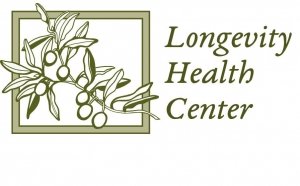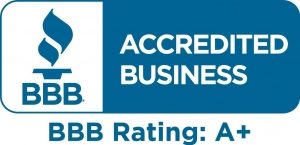All About Detox and Binders
By Dr. Alice Honican, L.Ac., ND
When I first began studying naturopathic medicine, I came across an analogy that stayed with me for over 20 years. Imagine your body as a bathtub with multiple faucets and drains. Some faucets fill the tub with clean, nourishing water, while others pour in dirty, contaminated water. The drains represent our body’s primary detoxification organs: the liver, kidneys, bowels, and lymphatic system.
The “dirty water” faucets introduce toxins into our bodies from various sources, including nutrient-depleted foods, electromagnetic fields, radiation exposure, environmental pollutants, toxic relationships, heavy metals, polluted air, antibiotics, pesticides, viruses, bacteria, and parasites. On the other hand, the “clean water” faucets supply our bodies with vital nutrients, wholesome foods, sunshine, exercise, positive relationships, a healthy mindset, restorative sleep, pure water, and fresh air.
When our bodies accumulate more toxins than they can effectively eliminate, we experience an overload, leading to fatigue, digestive issues, skin problems, and overall sluggishness. To maintain optimal health, we must ensure that our detox pathways are open and functioning properly, allowing the body to flush out toxins efficiently.
How to Support Detoxification
To promote the body’s natural detoxification process, we can incorporate various supportive practices, such as:
- Herbal detoxification to support the liver, kidneys, bowels, and lymphatic system.
- Adequate hydration, ensuring we drink plenty of clean, pure water.
- Homeopathic remedies, designed to stimulate detox pathways.
- Periodic fasting, which gives the digestive system a break and enhances cellular repair.
- Liver and gallbladder flushes to aid in bile production and toxin elimination.
- Saunas and infrared therapy, which promote sweating and toxin release through the skin.
- Lymphatic drainage therapy, to help move stagnant lymph fluid and support immune function.
While these methods are powerful tools for detoxification, they often mobilize toxins into circulation before they are fully excreted. This is where binders come into play.
The Role of Binders in Detoxification
Binders play a crucial role in supporting detoxification by actively capturing toxins, heavy metals, and other harmful substances, preventing their reabsorption, and ensuring they are effectively eliminated from the body. When incorporated into a detox protocol, binders can help reduce common detox reactions—often referred to as a “healing crisis “which may include headaches, fatigue, bloating, or skin breakouts.
Many patients who include binders in their detox regimen report benefits such as:
- Improved bowel regularity
- Reduced bloating and digestive discomfort
- Increased energy levels
- Clearer, healthier skin
Binders are especially beneficial following detoxification therapies such as far-infrared sauna sessions, lymphatic drainage treatments, and fasting protocols. Some of the most effective and commonly used binder supplements include:
- Activated charcoal – Known for its ability to absorb toxins and gases in the digestive tract.
- Bentonite clay – A natural clay that binds to heavy metals and toxins for safe elimination.
- Chlorella – A powerful green algae that binds to heavy metals and supports immune function.
- Humic and fulvic acids – These compounds enhance nutrient absorption while binding to environmental toxins.
- Dietary fiber – Helps move waste through the digestive system and supports gut health.
When Should You Consider Taking a Binder?
Adding a binder to your routine can be particularly beneficial in situations where toxin exposure is high. You may want to incorporate a binder if you:
- Have recently recovered from an infection or have taken antibiotics.
- Have experienced food poisoning and need to eliminate harmful bacteria and toxins.
- Are suffering from mold toxicity or environmental toxin exposure.
- Consume alcohol or eat highly processed foods with additives your body struggles to metabolize.
Personalized Detoxification with Bioenergetic Testing
Since every individual has unique detoxification needs, bioenergetic testing can help determine specific toxic burdens on the body. At Longevity Health Centers, our nutrition shops offer a wide range of high-quality binders, and our experienced naturopathic practitioners can help guide you toward the best option for your needs.
I asked my fellow skilled practitioners at Longevity to share their favorite binders and why they recommend them:
Anna Powers: “I often recommend Biotoxin Binder because it is gentle and can be taken at any time. Unlike some other binders that require strict timing around meals and medications, this one is more flexible. It’s especially helpful for highly sensitive patients who need a mild yet effective detox solution.”
Maria Jones-Sasso: “I love MegaIgG because it serves multiple purposes. It’s a dairy-free immunoglobulin that not only supports immune function and heals the mucosal lining but also acts like a mop, binding and removing toxins from the body.”
Cristina McMullen: “Ultra Binder is my go-to broad-spectrum binder. It’s highly effective at helping to remove a wide variety of toxins while still being gentle on the GI tract. The powder and capsules are both easy to take, and even my kids enjoy their ‘black water’ from time to time. I love incorporating it into a comprehensive detox protocol and using it after therapies like sauna, HOCATT, foot baths, and lymphatic treatments.”
Detoxification is a key component of maintaining long-term health, and using the right binders can make the process more effective and comfortable. If you’re unsure where to start, consult with a naturopathic practitioner to create a personalized detox plan tailored to your body’s needs.











